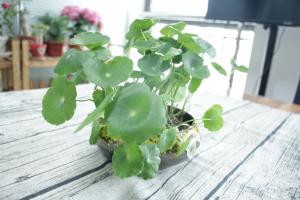Can You Can Tomatoes from Blighted Plants?
Tomatoes are one of the most popular garden plants. They are easy to grow, produce a generous yield, and can be enjoyed in a variety of dishes. However, even the most experienced gardener can encounter some problems with their tomato plants, such as blight. Blight is a disease that affects tomatoes and causes them to rot and decay. If you have blighted tomatoes in your garden, you may be wondering if you can still use them for canning.
The Risks of Canning Blighted Tomatoes
Before you decide to can tomatoes from blighted plants, it's essential to understand the risks involved. Blight can cause the tomatoes to break down and become mushy. This texture makes them unsuitable for canning as they may not be able to withstand the heat and pressure needed to safely process them. There may also be a higher risk of spoilage and bacterial growth, which can lead to foodborne illness. It's essential to take the necessary precautions if you do choose to can tomatoes from blighted plants.
Steps to Canning Tomatoes from Blighted Plants
If you decide to can tomatoes from blighted plants, there are some steps you can take to mitigate the risks. Here's how to do it:
Step 1: Inspect the Tomatoes
Before canning the tomatoes, inspect each one carefully. Any tomato that has visible signs of blight should be discarded. Only use tomatoes that are still firm and free from any rot or decaying spots.
Step 2: Wash and Blanch the Tomatoes
Wash each tomato in cold water and then blanch them in boiling water for about 30 seconds. This step will help to remove any dirt or bacteria that may be present on the surface of the tomato. Blanching will also help to remove the skin, making it easier to can the tomatoes.
Step 3: Remove the Skins and Cores
After blanching, remove the skins and cores from the tomatoes. You can do this by using a paring knife or a tomato coring tool. Make sure that all of the skin and core is removed, as these parts can be tough and may not can well.
Step 4: Pack the Tomatoes and Add Acid
Pack the prepared tomatoes into sterilized jars, leaving about 1/2 inch of headspace at the top. Add 1 tablespoon of lemon juice or 1/4 teaspoon of citric acid to each pint jar, or 2 tablespoons of lemon juice or 1/2 teaspoon of citric acid to each quart jar. The acid will help to preserve the tomatoes and prevent spoilage.
Step 5: Process the Jars
Process the jars in a pressure canner at 10 pounds of pressure for the recommended time based on your altitude. The processing time for tomatoes from blighted plants is the same as for healthy tomatoes, but it's essential to make sure that the pressure canner is functioning correctly to ensure that the jars are properly sealed and processed.
Tips for Canning Tomatoes from Blighted Plants
Here are some additional tips to ensure the safety of your canned tomatoes:
Use only fresh, ripe tomatoes that are free from any signs of disease or decay.
Make sure that all of your equipment is sterilized before and after use to prevent contamination.
Follow recommended canning procedures and processing times to ensure that the jars are adequately sealed and processed.
Store the canned tomatoes in a cool, dark place and check for any signs of spoilage before use.
The Bottom Line
Canning tomatoes from blighted plants can be challenging, but with the right precautions, it can be done safely. Make sure to inspect each tomato carefully, wash and blanch them before canning, remove the skins and cores, and add acid to the jars before processing. Follow recommended canning procedures and processing times, and store the canned tomatoes properly. By taking these steps, you can enjoy your homegrown tomatoes all year long, even if they were affected by blight.

 how many times do yo...
how many times do yo... how many planted tre...
how many planted tre... how many pine trees ...
how many pine trees ... how many pecan trees...
how many pecan trees... how many plants comp...
how many plants comp... how many plants can ...
how many plants can ... how many plants and ...
how many plants and ... how many pepper plan...
how many pepper plan...





























